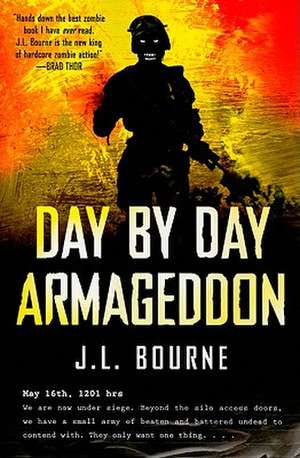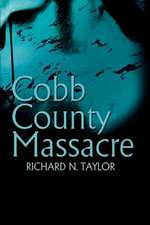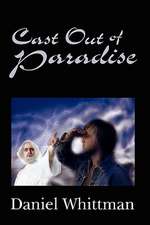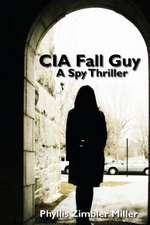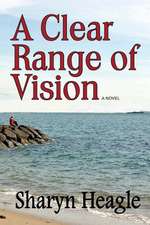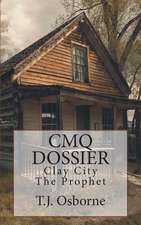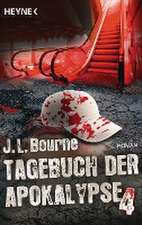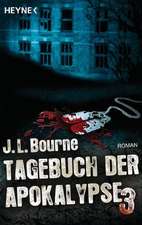Day by Day Armageddon
Autor J. L. Bourne Z. A. Rechten Limba Engleză Paperback – 31 aug 2009
| Toate formatele și edițiile | Preț | Express |
|---|---|---|
| Paperback (2) | 91.10 lei 3-5 săpt. | |
| Simon&Schuster – 31 aug 2009 | 91.10 lei 3-5 săpt. | |
| Gallery/Permuted Press – 13 mar 2013 | 99.79 lei 3-5 săpt. |
Preț: 91.10 lei
Nou
Puncte Express: 137
Preț estimativ în valută:
17.43€ • 18.01$ • 14.51£
17.43€ • 18.01$ • 14.51£
Carte disponibilă
Livrare economică 04-18 martie
Preluare comenzi: 021 569.72.76
Specificații
ISBN-13: 9781439176672
ISBN-10: 1439176671
Pagini: 200
Dimensiuni: 161 x 226 x 14 mm
Greutate: 0.23 kg
Editura: Simon&Schuster
ISBN-10: 1439176671
Pagini: 200
Dimensiuni: 161 x 226 x 14 mm
Greutate: 0.23 kg
Editura: Simon&Schuster
Descriere
Sporadic news reports indicate chaos and violence spreading through U.S. cities. An unknown evil is sweeping the planet, and the dead are rising to claim their right as the new dominant species in the food chain.
Notă biografică
Extras
Chapter
One
1 November
Panama—Task Force Hourglass
Chaos. Pure and complete. The scene below resembled an area following a Category 5 hurricane or aerial bombardment. The many canal structures still remained at the whim of the elements, showing creeping signs of decay and neglect. The jungle was already beginning to reclaim the canal regions, commencing a long bid to erase any evidence that man had split the continents a century before.
Soulless figures walked about, searching, reacting to the firings
of dead synapses.
A corpse wearing only a mechanic’s work shirt shuffled about the area. The mechanic had met its demise via the barrel of a Panamanian soldier’s rifle, back when the national curfew was still being enforced. “He” became “it” shortly after the punctured heart stopped and the body temperature began to fall, letting loose the mystery that reanimated dead people. The anomaly (as it was known) spread quickly throughout the mechanic’s nervous system, altering key areas of sensory anatomy. It anchored and replicated in the brain, but only in the sections where primal instinct developed and was stored via DNA and electrochemical switches from eons of evolution. Along its path of self-replication and infection, the anomaly made a quick stop inside the ear canal. There it microscopically altered the physical make-up of the inner ear ossicles, enhancing the hearing. The eyes were the last stop. After a few hours of reanimation, the anomaly completed replication and replacement of certain cellular structures inside the eye, resulting in rudimentary short-range thermal sensory ability, balancing its death-degraded vision.
The former mechanic stopped and cocked its head sideways. It could hear a noise in the distance, something familiar—a nanosecond flash of audible recognition, then it was gone and forgotten. The sound grew louder, exciting the creature, causing salivation. Translucent gray fluid dribbled from its chin, hitting its bare and nearly skeletal leg. The mechanic took a small step forward in the direction of the noise; the open tendons on top of its foot flexed and pulled the small foot bones as it moved. The creature sensed that the increasing sound was not natural, was not the wind or incessant rain noises it normally ignored. The creature’s pace quickened as it reached a small patch of dense jungle trees. A snake struck out as the mechanic entered the foliage, slapping dead flesh and leaving two small holes in its nearly gone calf muscle. The creature paid no attention and continued to slog forward, nearly clearing the foliage. The chorus of souls-be-damned boomed out from all directions as the thing broke through to the clearing.
Two hundred thousand undead on the mechanic’s side of the Panama Canal bellowed at the sky. A gray military helicopter zoomed over at one hundred knots, trailing the canal southeast.
The mechanic reacted instinctively to the engine noise, reaching up as if it might pluck the great bird from the sky and eat it cold. Frenzied with hunger, it followed the whirlybird, eyes locked onto the flying machine. Ten paces later, the creature stepped over the edge into the canal waters.
The canal’s twisting form was no longer filled with brown muddy water and transiting ships. Bloated, floating bodies now blocked her once-busy shipping route. Some of the disgusting forms still moved, not yet dissolved by the Panama heat and humidity or mosquito larva—infested waters. The countless hordes on one side of the canal roared and moaned at their undead doppelgängers on the other in a Hatfield and McCoy feud spanning the great divide.
Before the anomaly, the world was fixated on the Dow Jones Industrial Average, phony government U3 unemployment numbers, spot gold prices, currency indexes, and the worldwide debt crisis. The very few that now survived prayed to go back to a Dow 1,000 and 80 percent unemployment; at least it would be something.
The conditions on the ground had degraded exponentially since the first case of the anomaly was documented in China. Early in the crisis, the surviving executive branch of the United States government made the decision to nuke the major continental cities in a bid to “deter, deny, or degrade the undead ability to eliminate the surviving population of the United States.” The cities were leveled by high-order nuclear detonation. Many of the creatures were instantly disintegrated in the process but the tradeoff was catastrophic. The dead outside of the comparatively small blast zones were zapped with so many alpha, beta, and gamma particles that the radiation eradicated any bacteria that might enable decomposition, preserving the dead for what scientists estimated at decades.
A few scattered human survivors remained though, and some military command and control was still in place. An operation was at this very moment underway to uncover the chain of events that brought humanity to the brink, maybe beyond.
Behind closed doors there was talk of possibly engineering an effective weapon of mass destruction against the creatures, as there were not enough small-arms ammunition or people to pull the triggers left on the planet. Behind thicker closed doors, there was talk of other, more nefarious things.
The helicopter pilot screamed back to the passengers, cheek full of chewing tobacco, “Three-zero mikes until on top the USS Virginia!”
The helicopter’s internal communications system failed to function as advertised months ago. It was now only good for cockpit communications between the pilot and copilot up front. The pilot was easily in his sixties, as told by his gray hair, deep crow’s feet, and old and battered Air America ball cap. The rider in the copilot’s seat was not part of the air crew—just another member of what was known on the flight docket as Task Force Hourglass.
Pilots had been in short supply over the past few months, most of them lost on reconnaissance missions. The remaining airworthy military aircraft were constructed of thousands of complex moving parts, all of which needed to be rigorously inspected and maintained, or they would soon become very expensive lawn darts. The old pilot seemed to enjoy the company of having someone in the right seat, someone to die alongside if things went too far south, which was frequent.
The rider appeared jumpy and hyperaware of his surroundings. Wearing an overly tight harness, his hand on the door latch and his eyes on the master caution panel, he nervously scanned the helicopter instruments. The rider risked a glance at the ground; they were flying low and fast. An optical illusion from the cockpit put the helicopter nearly level with the canal banks on either side. The creatures screamed and thrashed loudly as they fell into the water, unable to compete with the deafening engine noise. The rider easily but involuntarily filled the gaps with his imagination, hearing the songs of the dead from below. The permanent PTSD gained from the past year’s events pushed forward in his consciousness. He instinctively slapped his side, feeling for his carbine, preparing for another crash.
The pilot took notice and squawked into his headset, “Heard about what happened to you. Chopper went down in the badlands.”
The rider keyed the microphone on his headset. “Something like that.”
The pilot grumbled, “You just transmitted on the radio. Key down to talk to me, and up to talk to the world.”
“Oh, sorry.”
“Don’t worry about it; I doubt anyone heard it anyway. Only those things around. Lots of fellow pilots walking about down there now. These runs keep getting more dangerous by the sortie. The birds are falling apart, no spare parts . . . What did you do before?” the old man yelled into the headset over the whine of the neglected turbine engines.
“I’m a military officer.”
“What branch?”
The rider paused and said, “I’m a navy lieu—uh, a commander.”
The pilot laughed as he said, “Which is it, son? Lieutenant is a ways from commander.”
“Long, boring story.”
“Son, I doubt that. What did you do in the navy before?”
“Aviation.”
“Hell, you wanna fly the rest of the way?”
“No thanks. I’m not exactly the best helicopter stick.”
The pilot chuckled at this. “When I was running small fixed wings low over Laos before you were born, I didn’t know how to fly one of these, either.”
The rider looked down at the undead masses below and mumbled, “I didn’t think we were flying anything over Laos.”
The old man smiled and said, “We weren’t. But how do ya think all them Phoenix Program snipers got close and personal with the NVA brass? By humping their bolt guns a hundred miles through the jungle? Shit . . . if you think Phoenix was only active in Vietnam, I’ve got some oceanfront property in Panama down there to sell ya!”
Both men laughed over the loud thumping rhythm of the spinning rotor blades above their heads. The rider reached into his pack for a piece of gum scavenged from a military MRE, offering the pilot half.
“No thanks, plays hell on my dentures and I’m all out of Fixodent. Who you got back there with you anyway?”
The rider frowned at the old man. “They don’t tell you anything, do they? The Arab-looking guy is a friend of mine. The others are SOCOM, or some of what’s left of them anyway.”
“SOCOM, hmm?”
“Yeah, a few frogs and such. I’m not sure I can tell you much more than that and to be honest, I don’t know much more anyway.”
“I understand, you wanna keep the old man in the dark.”
“No, it’s not that, it’s . . .”
“I’m kidding, no worries. I had to keep a secret or two in my day.”
A few more rotor-thumping minutes passed before the pilot pointed his wrinkled finger forward to the horizon and said, “There’s the Pacific. The coords to the Virginia are on that kneeboard card. Mind punching them into the inertials?”
“Not a problem.”
After the coordinates were entered, the pilot altered course a few degrees starboard and maintained heading.
“What’s your name, son?”
“My friend back there calls me Kilroy, Kil for short. What’s yours?”
“I’m Sam. Pleasure to meet you, even though this may be the first and last time.”
“Well, Sam, you sure know how to keep spirits high.”
Sam reached up, tapped the glass on the upper gauge panel, and said, “You know the risks, Kilroy. There ain’t no tellin’ where you’re goin’ in your little black submarine. Wherever it is, you can bet it will be just as dangerous as right below us. There ain’t no safe zones anywhere.”
© 2012 J. L. Bourne
1 November
Panama—Task Force Hourglass
Chaos. Pure and complete. The scene below resembled an area following a Category 5 hurricane or aerial bombardment. The many canal structures still remained at the whim of the elements, showing creeping signs of decay and neglect. The jungle was already beginning to reclaim the canal regions, commencing a long bid to erase any evidence that man had split the continents a century before.
Soulless figures walked about, searching, reacting to the firings
of dead synapses.
A corpse wearing only a mechanic’s work shirt shuffled about the area. The mechanic had met its demise via the barrel of a Panamanian soldier’s rifle, back when the national curfew was still being enforced. “He” became “it” shortly after the punctured heart stopped and the body temperature began to fall, letting loose the mystery that reanimated dead people. The anomaly (as it was known) spread quickly throughout the mechanic’s nervous system, altering key areas of sensory anatomy. It anchored and replicated in the brain, but only in the sections where primal instinct developed and was stored via DNA and electrochemical switches from eons of evolution. Along its path of self-replication and infection, the anomaly made a quick stop inside the ear canal. There it microscopically altered the physical make-up of the inner ear ossicles, enhancing the hearing. The eyes were the last stop. After a few hours of reanimation, the anomaly completed replication and replacement of certain cellular structures inside the eye, resulting in rudimentary short-range thermal sensory ability, balancing its death-degraded vision.
The former mechanic stopped and cocked its head sideways. It could hear a noise in the distance, something familiar—a nanosecond flash of audible recognition, then it was gone and forgotten. The sound grew louder, exciting the creature, causing salivation. Translucent gray fluid dribbled from its chin, hitting its bare and nearly skeletal leg. The mechanic took a small step forward in the direction of the noise; the open tendons on top of its foot flexed and pulled the small foot bones as it moved. The creature sensed that the increasing sound was not natural, was not the wind or incessant rain noises it normally ignored. The creature’s pace quickened as it reached a small patch of dense jungle trees. A snake struck out as the mechanic entered the foliage, slapping dead flesh and leaving two small holes in its nearly gone calf muscle. The creature paid no attention and continued to slog forward, nearly clearing the foliage. The chorus of souls-be-damned boomed out from all directions as the thing broke through to the clearing.
Two hundred thousand undead on the mechanic’s side of the Panama Canal bellowed at the sky. A gray military helicopter zoomed over at one hundred knots, trailing the canal southeast.
The mechanic reacted instinctively to the engine noise, reaching up as if it might pluck the great bird from the sky and eat it cold. Frenzied with hunger, it followed the whirlybird, eyes locked onto the flying machine. Ten paces later, the creature stepped over the edge into the canal waters.
The canal’s twisting form was no longer filled with brown muddy water and transiting ships. Bloated, floating bodies now blocked her once-busy shipping route. Some of the disgusting forms still moved, not yet dissolved by the Panama heat and humidity or mosquito larva—infested waters. The countless hordes on one side of the canal roared and moaned at their undead doppelgängers on the other in a Hatfield and McCoy feud spanning the great divide.
Before the anomaly, the world was fixated on the Dow Jones Industrial Average, phony government U3 unemployment numbers, spot gold prices, currency indexes, and the worldwide debt crisis. The very few that now survived prayed to go back to a Dow 1,000 and 80 percent unemployment; at least it would be something.
The conditions on the ground had degraded exponentially since the first case of the anomaly was documented in China. Early in the crisis, the surviving executive branch of the United States government made the decision to nuke the major continental cities in a bid to “deter, deny, or degrade the undead ability to eliminate the surviving population of the United States.” The cities were leveled by high-order nuclear detonation. Many of the creatures were instantly disintegrated in the process but the tradeoff was catastrophic. The dead outside of the comparatively small blast zones were zapped with so many alpha, beta, and gamma particles that the radiation eradicated any bacteria that might enable decomposition, preserving the dead for what scientists estimated at decades.
A few scattered human survivors remained though, and some military command and control was still in place. An operation was at this very moment underway to uncover the chain of events that brought humanity to the brink, maybe beyond.
Behind closed doors there was talk of possibly engineering an effective weapon of mass destruction against the creatures, as there were not enough small-arms ammunition or people to pull the triggers left on the planet. Behind thicker closed doors, there was talk of other, more nefarious things.
The helicopter pilot screamed back to the passengers, cheek full of chewing tobacco, “Three-zero mikes until on top the USS Virginia!”
The helicopter’s internal communications system failed to function as advertised months ago. It was now only good for cockpit communications between the pilot and copilot up front. The pilot was easily in his sixties, as told by his gray hair, deep crow’s feet, and old and battered Air America ball cap. The rider in the copilot’s seat was not part of the air crew—just another member of what was known on the flight docket as Task Force Hourglass.
Pilots had been in short supply over the past few months, most of them lost on reconnaissance missions. The remaining airworthy military aircraft were constructed of thousands of complex moving parts, all of which needed to be rigorously inspected and maintained, or they would soon become very expensive lawn darts. The old pilot seemed to enjoy the company of having someone in the right seat, someone to die alongside if things went too far south, which was frequent.
The rider appeared jumpy and hyperaware of his surroundings. Wearing an overly tight harness, his hand on the door latch and his eyes on the master caution panel, he nervously scanned the helicopter instruments. The rider risked a glance at the ground; they were flying low and fast. An optical illusion from the cockpit put the helicopter nearly level with the canal banks on either side. The creatures screamed and thrashed loudly as they fell into the water, unable to compete with the deafening engine noise. The rider easily but involuntarily filled the gaps with his imagination, hearing the songs of the dead from below. The permanent PTSD gained from the past year’s events pushed forward in his consciousness. He instinctively slapped his side, feeling for his carbine, preparing for another crash.
The pilot took notice and squawked into his headset, “Heard about what happened to you. Chopper went down in the badlands.”
The rider keyed the microphone on his headset. “Something like that.”
The pilot grumbled, “You just transmitted on the radio. Key down to talk to me, and up to talk to the world.”
“Oh, sorry.”
“Don’t worry about it; I doubt anyone heard it anyway. Only those things around. Lots of fellow pilots walking about down there now. These runs keep getting more dangerous by the sortie. The birds are falling apart, no spare parts . . . What did you do before?” the old man yelled into the headset over the whine of the neglected turbine engines.
“I’m a military officer.”
“What branch?”
The rider paused and said, “I’m a navy lieu—uh, a commander.”
The pilot laughed as he said, “Which is it, son? Lieutenant is a ways from commander.”
“Long, boring story.”
“Son, I doubt that. What did you do in the navy before?”
“Aviation.”
“Hell, you wanna fly the rest of the way?”
“No thanks. I’m not exactly the best helicopter stick.”
The pilot chuckled at this. “When I was running small fixed wings low over Laos before you were born, I didn’t know how to fly one of these, either.”
The rider looked down at the undead masses below and mumbled, “I didn’t think we were flying anything over Laos.”
The old man smiled and said, “We weren’t. But how do ya think all them Phoenix Program snipers got close and personal with the NVA brass? By humping their bolt guns a hundred miles through the jungle? Shit . . . if you think Phoenix was only active in Vietnam, I’ve got some oceanfront property in Panama down there to sell ya!”
Both men laughed over the loud thumping rhythm of the spinning rotor blades above their heads. The rider reached into his pack for a piece of gum scavenged from a military MRE, offering the pilot half.
“No thanks, plays hell on my dentures and I’m all out of Fixodent. Who you got back there with you anyway?”
The rider frowned at the old man. “They don’t tell you anything, do they? The Arab-looking guy is a friend of mine. The others are SOCOM, or some of what’s left of them anyway.”
“SOCOM, hmm?”
“Yeah, a few frogs and such. I’m not sure I can tell you much more than that and to be honest, I don’t know much more anyway.”
“I understand, you wanna keep the old man in the dark.”
“No, it’s not that, it’s . . .”
“I’m kidding, no worries. I had to keep a secret or two in my day.”
A few more rotor-thumping minutes passed before the pilot pointed his wrinkled finger forward to the horizon and said, “There’s the Pacific. The coords to the Virginia are on that kneeboard card. Mind punching them into the inertials?”
“Not a problem.”
After the coordinates were entered, the pilot altered course a few degrees starboard and maintained heading.
“What’s your name, son?”
“My friend back there calls me Kilroy, Kil for short. What’s yours?”
“I’m Sam. Pleasure to meet you, even though this may be the first and last time.”
“Well, Sam, you sure know how to keep spirits high.”
Sam reached up, tapped the glass on the upper gauge panel, and said, “You know the risks, Kilroy. There ain’t no tellin’ where you’re goin’ in your little black submarine. Wherever it is, you can bet it will be just as dangerous as right below us. There ain’t no safe zones anywhere.”
© 2012 J. L. Bourne
